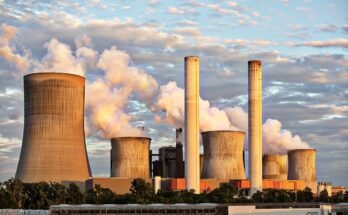“Economic impact” refers to the negative or positive outcome on a region, country, or world economy derived from a given event, policy, activity, or decision. Such an effect can be evaluated based on a change in economic indicators such as GDP, changes in the employment level, inflation, and consumer spending. It is essential to understand economic impact by policymakers, businesses, and individuals, since it enables them to gauge how different factors will affect the financial health and stability of a society.
Types of Economic Impact
Nature and influence of economic activities can be distinguished from one another based on their characteristics.
1. Direct Economic Impact
Direct impact denotes the immediate impact of an economic activity. When a company builds a factory, the direct economic impact will include investment and wages paid to employees and profit earned on the sale of goods and services. The measurement of direct effects is comparatively easy, as they are tangible and directly related to the activity.
2. The Indirect Economic Impact
Indirect impacts derive from the direct economic activities. For instance, a new factory purchasing raw materials from local suppliers can create an indirect economic impact on their businesses. The ripple effect extends to the entire economy as businesses supply goods and services to enable the original activity. These indirect impacts are generally rather difficult to measure, yet they are crucial for understanding the complete picture of changes within an economy.
3. Induced Economic Impact
Induced economic impact happens when workers or businesses that have directly or indirectly derived benefits from an economic activity spend their income on goods and services that cause a rise in demand in other parts of the economy, boosting production and creating jobs. For example, the factory employees spend their wage on housing, food, and entertainment, which creates a boost for the local economy.
Measurement of Economic Impacts
Analysts tend to use one of a large number of approaches to describe economic impact by providing some idea of how activities create impacts on an economy. Quite a small number of methods are used for this purpose:
1. Input-Output Models
An approach incorporating all economic sectors to ascertain the impact of changes in one sector on others is known as an input-output model. It tracks the flow of products and services within an economy and enables an estimate to be made of the total economic impact of an activity.
2. Economic Multipliers
The multipliers symbolize the extent to which any rise in expenditure or investment in one sector reverberates through the economy. A higher multiplier implies that the economic activity in question will produce a larger overall impact on the economy.Thus, economic activity worth $2 million will be generated by a $1 million investment provided there is a multiplier equal to 2. These plots enable a clear examination of the indirect and induced effects of firms on economic activities in CBA.
3. Cost-Benefit Analysis (CBA)
Cost-benefit analysis is a method of comparing the expected economic benefits of a project or policy against its cost. This particular framework helps the decision-makers in determining whether or not the scheme or investment will yield a favorable economic return. Infrastructural development, taxation reforms, or investment in new technologies are some examples wherein they can be applied.
Factors Impacting Economic Effects
There are a plethora of issues that might determine the extent and breadth of the economic impact. These are:
1. Geographic Scope
In considering economic activity, geographic scope greatly determines overall economic impact. For instance, a local activity may have a limited economic impact, such as a new business opening in that region. However, large-scale activities, such as major infrastructure projects, multinational trade agreements, or natural disasters, can have an influence on national or even global economies.
Different sectors of diverse industries have varying impacts on the economy. Technology could provide unprecedented stimulation towards economic growth as it continues to enjoy an almost unrestricted sphere of influence fuelled by its innovation power. In contrast, other branch divisions such as agriculture and retail may create a more localized economic impression.The extent of an external influence upon anystated sector depends on its integration with the larger economies.
2. Economic Globalization
With integration into the global economy comes the realization that economic activity can no longer be contained by the banned habit of nations. A relatively isolated event somewhere can really affect the global economy, given that trade, investment, and supply chains interrelate with each other elsewhere. For example, a slowdown in the economy of China will have huge repercussions on global trade and will lead to supply chain disruptions that, in unbroken reactions, will diffuse across many nations’ economies.
3. Government Policies and Interventions
Policies on tax cuts, fiscal stimulus packages, or variations in regulations are highly relevant determines the degree to which economic activity will, in fact, stimulate economic impact. For example, this is to say that had, for instance, the government decided to spend heavily on green energy as an immediate policy to protect jobs, some jobs would be created in the renewable energy sector and successively promote sustainability.
The benefits and costs of economic activity
On the bright side, a number of economic activities may have beneficial economic impacts, but other aspects can always be more harmful or damaging. For example:
Positive economic impact:
- Set up of new factories, new jobs: New business creation and new sectors provide job opportunities along with higher income that contribute positively to economic development.
- Infrastructure development: Roads, bridges, and improved services lend efficiency to any economic activity and help in its long-term economic growth.
- Technological change: Innovations enhance productivity and create new industries which foster economic growth.
Negative economic impact:
- Environmental degradation: Some economic activities, such as mining or heavy industry, can damage the environment, thus exacting long-term costs on the economy.
- Economic inequality: Women in a few that have leveraged economic activities profit while some sectors or regions are left further behind.
- Resource exhaustion: The economy becomes much less stable overall if reliance on these limited supplies is excessive, because alternative sources of energy or income cannot work fluently.
Conclusion
The economic impact is a multi-dimensional concept that synthesizes how activities or events affect a variety of economic variables. Measuring and understanding economic impacts can equip policymakers, businesses, and individuals with the necessary information to inform their decision-making toward sustainable growth and prosperity. By understanding the differences among kinds of economic impact-d-rect, indirect, and induced-and the factors that influence them, one can start to appreciate the full scope of an activity’s impact. With the world’s growing interconnections, the weighing of economic impact at local and global levels holds more pressure than ever before.



